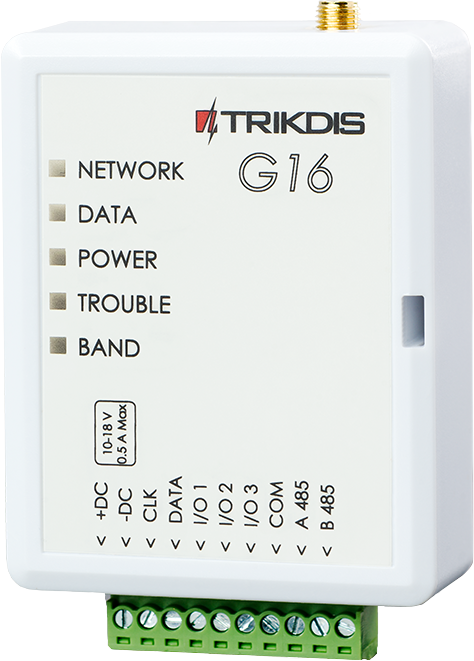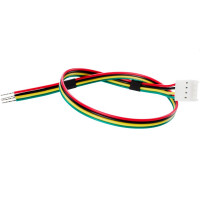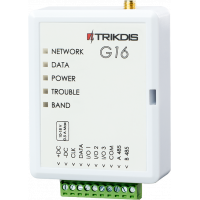Alarm control panel direct control with data bus or serial port connection
- 19.10.2018
- Manufacturer: Trikdis
Communication with the Alarm Control Panel via Data Bus or Serial Port, How is it Possible?
In a traditional setup, universal communicators are typically connected to the alarm’s telephone line (TIP-RING). Trikdis specialized communicators (alarm communicators) are uniquely capable of connecting to the internal communication channel of the alarm system. Depending on the manufacturer, this can be achieved in two ways:
- The Trikdis communicator must be connected to a data bus, for example, with DSC, Honeywell, CROW, etc.,
- With Paradox and Texecom panels, the serial port can be used.
The essence of the technology is that the connected Trikdis communicator knows the language of the alarm control panel and can interpret the messages sent to it (unidirectional communication). Just like the keypads or other peripherals, the communicator also receives and understands the events sent by the system and will forward them to the client and/or central monitoring as per the settings.
What are the advantages?
- Simpler than the traditional TIP RING connection
- More reliable
- Faster to install
- Faster communication
Direct Control
Direct control has additional advantages. Beyond the above, the communicator not only receives events from the panel for forwarding, but some of the functions available on the keypad are also accessible, meaning this is a bidirectional communication.
What are the additional advantages of direct control?
- The entire system or any partition can be armed or disarmed using the user code (the same one used on the keypad)
- Automatic partition and zone mapping
- Detection of mapped zone status
(A frequent question, but this does not mean there is constant status display in the user app, the information on the zone status is only available when an event occurs and the app updates) - Zone bypass
- The outputs remain available for other control – there is no need to wire an output as a key switch for arming/disarming, it is done directly via the data bus or serial port
What is this solution not capable of?
- The PGM outputs cannot be controlled on the alarm control panel
- The alarm control panel cannot be programmed remotely or updated (TRIKDIS devices can be updated)
Which Trikdis communicators are capable of the above functions?

Take advantage of the smart functions and the direct control.
G16 GSM smart communicator with direct control.
Alarm control panels connectable via Data Bus or Serial Port
The Trikdis E16, G16 and GET are compatible with all control panels listed below . The main advantage of these specialized Trikdis communicators is that events are transmitted via the data bus or serial port.
Control panels marked in blue can be directly controlled (arming / disarming) via the serial port or data bus, without additional wiring.
Control panels marked in black receive events via the serial port or data bus , but require key switch zones and additional wiring for full control of the alarm system .

Magellan MG5000, MG5050, MG5050+*, MG5050E
DIGIPLEX EVO48, NE96, EVO96, EVO192*, EVOHD* (*Fw. above 7.50)
ESPRIT E55, 728ULT, 738ULT
For direct control, the firmware of PARADOX alarm panels must be at least version V.4.
* The Serial Port on the designated NEW alarm panels is factory locked. The port must be enabled before it can communicate with any external device. How to unlock Serial Port


TIP-RING


Premier Elite 12, 24, 48, 64, 88, 168


You don't see your model listed above?
For not supported and other manufacturers control panels, use the E16T communicator with telephone line (TIP RING) connection.

You don't see your model listed above?
For not supported and other manufacturers control panels, use the G16T communicator with telephone line (TIP RING) connection.
What smart solutions can be utilized with Trikdis communicators?
Depending on the device, Trikdis smart communicators and Trikdis smart alarm control panels have one or more outputs. These outputs can be used for control: gate or garage door opening, heating, irrigation, lighting control, etc. These can be enhanced with some sensors, such as light, liquid level, temperature sensors, to create a simpler smart home system, where the communicator’s input can be used as feedback (e.g., if the gate or garage door is open).









